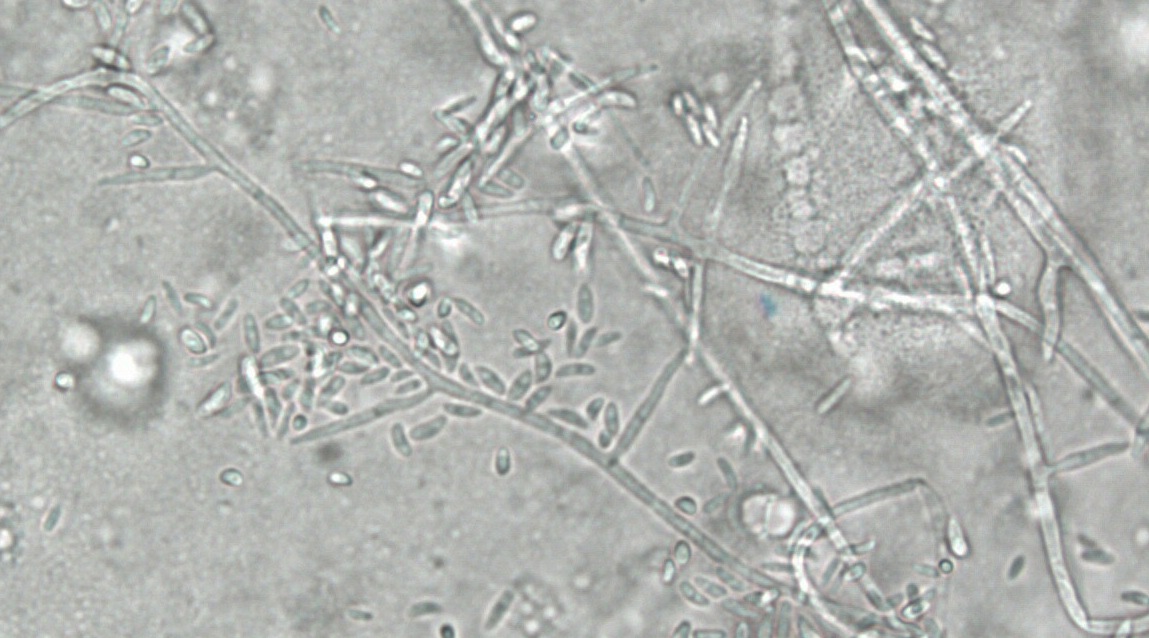Mold Library
Fusarium

Distribution
The genus Fusarium is a cosmopolitan fungus with a worldwide distribution. Fusarium is commonly found in soil, dead or living plants, grains, and indoors it is often associated with humidifiers. Fusarium is a common plant pathogen causing root and stem rot, vascular wilt and fruit rot.
Growth Characteristics
Fusarium has a rapid growth rate. The colony texture ranges from flat to wooly or cottony. The color of the colonies may be white, tan, salmon, cinnamon, yellow, red violet, pink, or purple.
Microscopic Characteristics
The conidiophores are often branched and produce large pasty masses of spores from tapered phialides. Phialides are cylindrical, simple, or branched with a small collarette at the apex. Two types of spores are produced: macroconidia and microconidia. Macroconidia are produced from the phialides on unbranched or branched conidiophores. They are curved, 2- or more celled, thick-walled, smooth, and canoe-shaped. Also, macroconidia have a distinct basal foot cell and pointed distal ends. Microconidia are formed on long or short simple conidiophores. They are typically unicellular, hyaline, ovoid to ellipsoid, and produced in slimy balls.
Health Effects
Fusarium has been reported to occasionally cause keratitis, endophthalmitis, onychomycosis, cutaneous infections (open wounds), pulmonary infections and mycetoma. Fusarium may also be opportunistic pathogens in immunocompromised individuals.
Fusarium species produce a number of mycotoxins. Ingestion of contaminated grains may cause allergic symptoms or be carcinogenic after long-term consumption.
